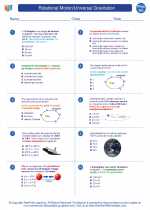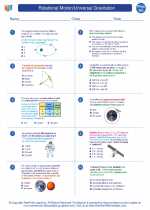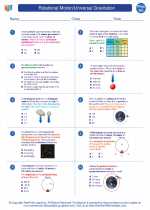Rainbow
A rainbow is a meteorological phenomenon that is caused by reflection, refraction, and dispersion of light in water droplets, resulting in a spectrum of light appearing in the sky. It takes the form of a multicolored circular arc.
Formation of a Rainbow
When sunlight hits a raindrop, it undergoes several processes that lead to the formation of a rainbow:
- Reflection: The light is reflected inside the water droplet.
- Refraction: The light is refracted as it enters and exits the water droplet, bending at different angles depending on its wavelength.
- Dispersion: The refracted light is dispersed into its component colors (red, orange, yellow, green, blue, indigo, and violet) due to the varying angles of refraction for different wavelengths.
- Multiple Reflections: The dispersed light undergoes multiple internal reflections within the water droplet, further separating the colors.
- Emergence: Finally, the separated colors of light emerge from the raindrop at different angles, creating the arc of a rainbow.
Key Concepts to Understand
Students should be familiar with the following key concepts related to rainbows:
- Wavelength: The different colors of light have different wavelengths, which causes them to refract at different angles within the water droplets.
- Angle of Incidence: The angle at which sunlight enters the water droplets affects the position and visibility of the rainbow.
- Primary and Secondary Rainbows: Understand the differences between primary and secondary rainbows, including their order of colors and the number of reflections inside the water droplets.
- Supernumerary Rainbows: Learn about the faint, extra bands of color that sometimes appear on the inner edge of a primary rainbow.
Studying the Rainbow
To study rainbows in more depth, students can conduct the following activities:
- Prism Experiment: Use a prism to demonstrate the dispersion of white light into its component colors, similar to what happens in a rainbow.
- Simulating Rainbows: Use a water hose to create a mist and observe the formation of rainbows in the water droplets.
- Calculating Rainbow Angles: Use geometric and trigonometric principles to calculate the angles at which different colors of light emerge from a water droplet to form a rainbow.
Real-World Applications
Understanding the physics of rainbows has practical applications in fields such as meteorology, optics, and even art and design. Students can explore these applications to appreciate the real-world significance of rainbow phenomena.
[Rainbow] Related Worksheets and Study Guides:
.◂Physics Worksheets and Study Guides High School. Rotational Motion/Universal Gravitation
Worksheet/Answer key Rotational Motion/Universal Gravitation
Rotational Motion/Universal Gravitation  Worksheet/Answer key
Worksheet/Answer key Rotational Motion/Universal Gravitation
Rotational Motion/Universal Gravitation  Worksheet/Answer key
Worksheet/Answer key Rotational Motion/Universal Gravitation
Rotational Motion/Universal Gravitation 

 Worksheet/Answer key
Worksheet/Answer key
 Worksheet/Answer key
Worksheet/Answer key

The resources above cover the following skills:
EARTH AND SPACE SCIENCE (NGSS)
Earth’s Place in the Universe
Students who demonstrate understanding can:
Use mathematical or computational representations to predict the motion of orbiting objects in the solar system.
EARTH AND SPACE SCIENCE (NGSS)
Earth’s Place in the Universe
Students who demonstrate understanding can:
Use mathematical or computational representations to predict the motion of orbiting objects in the solar system.
EARTH AND SPACE SCIENCE (NGSS)
Earth’s Place in the Universe
Students who demonstrate understanding can:
Use mathematical or computational representations to predict the motion of orbiting objects in the solar system.
EARTH AND SPACE SCIENCE (NGSS)
Earth’s Place in the Universe
Students who demonstrate understanding can:
Use mathematical or computational representations to predict the motion of orbiting objects in the solar system.